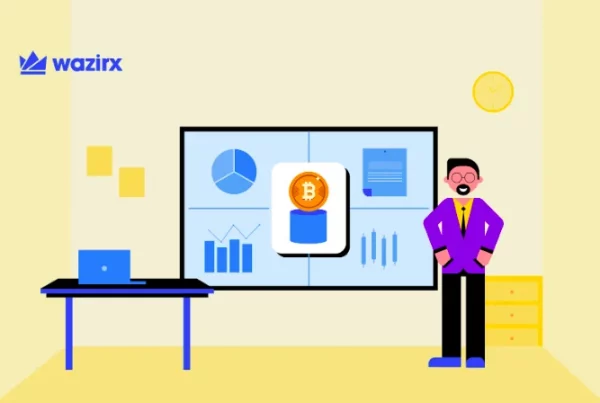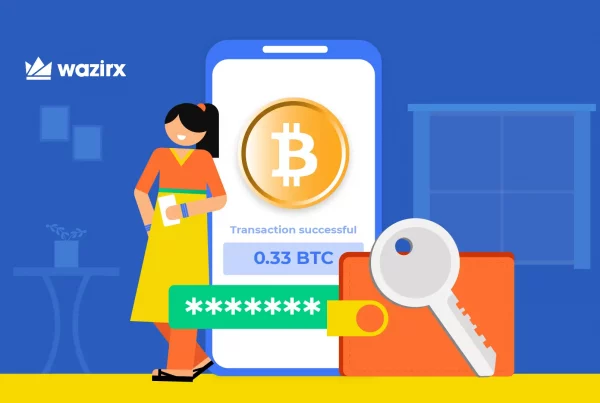Table of Contents
Note: This blog is written by an external blogger. The views and opinions expressed within this post belong solely to the author.
These days, a lot of people are interested in cryptocurrency. Interest in cryptocurrencies is at an all-time high, whether it is due to a curiosity with the technology underpinning popular tokens or simply a desire to benefit from them.
While many of us buy and sell cryptocurrencies for a profit the same way that we do with traditional stocks, they are a bit different. When you buy stocks, you are buying a fraction of ownership in a company, while with cryptocurrency, you are holding a medium of exchange and not buying into a ‘company’ unless you participate in an ICO. Additionally, cryptos are not as regulated as stocks due to the decentralized nature of blockchain, its underlying technology. This has, at the same time, contributed to the interest around it.
However, curiosity about the inner workings of popular tokens like bitcoin and ether goes hand in hand with this interest. Many of us, in particular, are curious about the origins of cryptocurrencies. Given that cryptocurrency exists solely in the digital realm and is not issued by a central bank, it may be difficult for non-techies to comprehend where Bitcoin originates from and how it functions.
[wd_hustle id="4" type="embedded"/]While bitcoin is complicated, its inner workings are not as perplexing as one might think.
How are Cryptocurrencies Made?
If you’ve read any crypto or blockchain-related literature, you’ve almost certainly come across the word “mining.” Mining is a term used frequently in the crypto industry because it is the method by which cryptocurrencies are distributed.
One thing to bear in mind is that all cryptocurrencies are built on blockchains, and all cryptocurrency transactions take place on a blockchain. Before a transaction can be completed on a blockchain, it must first be requested or initiated. Validation is the process of confirmation, and it must be carried out on a regular basis for a blockchain network (such as the Bitcoin network) to function effectively.
These validations are performed by a network of computers, and those that donate their computers to validate transactions are rewarded with the network’s native token. Mining is the term for this type of activity.
However, the method of mining varies, and there are two blockchain systems that can be used to do so: proof-of-work and proof-of-stake. The main distinction between the two is how validation is accomplished. Validators in a proof-of-work system must use their computers to solve a complex mathematical puzzle.
Those involved in the mining process are rewarded with a predefined quantity of tokens once a group of transactions (a block) has been validated, and this is how more coins/tokens are introduced into the market. The Bitcoin network is an example of a proof-of-work system that uses a lot of energy.
Validators in a proof-of-stake network aren’t just the people who decide to solve the complicated mathematical puzzle. Validators are instead picked based on how many tokens they already own, i.e. how big of a stake in the network they have. Also, unlike the proof-of-work method, the proof-of-stake system consumes far less energy; examples include Polkadot, EOSIO, and Cardano, with Ethereum planning to migrate to this system shortly, decreasing up to 95% of its current energy use.
How is the Price of Crypto Determined?
There are thousands of cryptocurrencies in circulation these days, but some are worth tens of thousands of dollars while others are worth pennies on the dollar. What is the reason for this? And why are some cryptocurrencies more valuable than others?
The miners do not keep all of the bitcoin (or say any coin for that matter) that is created through mining. Many are instead sold to exchange platforms and other sites for purchase, which is how they spread across the market. The price at which the token will be sold to the general public is determined by a variety of criteria.
Then there’s the issue of mining costs. Proof-of-work tokens must be sold for a sum sufficient to cover the cost of mining equipment and electricity. However, demand and supply are the most significant factors in determining the price of a cryptocurrency.
At the end of the day, for some, cryptocurrency is money, and the value of money is derived. Take, for example, dogecoin, which has languished as an underappreciated cryptocurrency for much of its life. However, after Elon Musk started tweeting about the token, its value skyrocketed.
The price of bitcoin, the most widely used cryptocurrency, fluctuates due to a variety of factors. Because of the restricted supply, the price rises every time there is a halving (a drop in the number of tokens delivered for every block). Every time a new development occurs that increases demand for bitcoin, the price rises in accordance with the long-established law of supply and demand.
Conclusion
While many of us are unfamiliar with cryptocurrencies, their inner workings and basic principles may be easily described, providing us with a better grasp of this innovative concept.
 Disclaimer: Cryptocurrency is not a legal tender and is currently unregulated. Kindly ensure that you undertake sufficient risk assessment when trading cryptocurrencies as they are often subject to high price volatility. The information provided in this section doesn't represent any investment advice or WazirX's official position. WazirX reserves the right in its sole discretion to amend or change this blog post at any time and for any reasons without prior notice.
Disclaimer: Cryptocurrency is not a legal tender and is currently unregulated. Kindly ensure that you undertake sufficient risk assessment when trading cryptocurrencies as they are often subject to high price volatility. The information provided in this section doesn't represent any investment advice or WazirX's official position. WazirX reserves the right in its sole discretion to amend or change this blog post at any time and for any reasons without prior notice.










